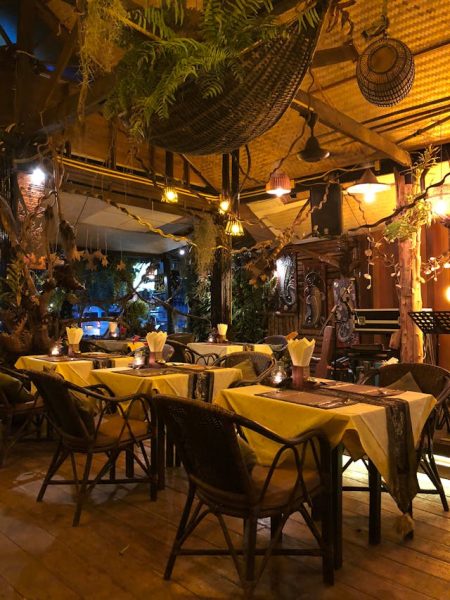You all know that my husband owned and operated restaurants in Newport and Providence, RI before retiring. I can tell you from experience that launching a restaurant is an ambitious endeavor that requires meticulous planning and execution. Below, we delve into the crucial steps required to open and maintain a thriving restaurant that stands out in a competitive market.

Defining Your Restaurant Concept and Brand Identity
The branding of your restaurant is the beacon that will guide all other decisions, so it merits substantial forethought. A clear concept and brand identity resonate with your target audience and give direction to decor, menu creation, and service style. Whether your aim is casual, cozy comfort food or an upscale gastronomic experience, consistency is key. A cohesive brand identity helps in carving out a niche, making your restaurant instantly recognizable.
When envisioning your restaurant’s personality, consider the themes and motifs that align with the dining experience you’re aiming to provide. Everything, from the color scheme on the walls to the presentation of your dishes, should amplify your restaurant’s character. Even your exterior signage and decor — such as custom garden flags — can reinforce your restaurant’s personality and attract foot traffic before guests ever step inside. It is equally important to ensure that this identity is communicated effectively through marketing strategies, which should distill the essence of your restaurant into a memorable image and message.
Crafting a Comprehensive Business Plan for Restaurant Success
A meticulously crafted business plan is your roadmap to turning the dream of owning a restaurant into a concrete reality. It outlines your vision, covering everything from startup costs to projected financials, and assists in attracting investors or securing loans. Consider your business plan the blueprint of your restaurant, essential for both launching and navigating future expansion.
Your business plan should cover market research, analyzing local demographics, and the competitive landscape. It must also include a financial plan detailing expected startup expenses, such as sourcing quality restaurant equipment Portland Oregon, and ongoing costs like staffing and supplies. A thorough plan articulates not only how you’ll attract customers but also how you will manage the delicate balance of revenue and expenses for restaurant equipment, supplies, and food products.
Incorporating Effective Storage and Preparation Solutions
Navigating Licenses, Permits, and Legal Requirements
Before the aroma of your delicious creations can waft through the air, you’ll need to navigate the maze of licenses, permits, and legal requirements. Each locale has its regulations, and compliance is not optional. This due diligence ensures public safety and can prevent costly legal issues or shutdowns down the path.
From health department certifications and liquor licenses to music royalties and building code compliance, the checklist can be extensive. It’s prudent to consult with local authorities, legal experts, and industry associations to understand what’s required. Ensuring that all legal requirements are met is foundational, not just for opening day, but for the ongoing operation of the restaurant.
Additionally, entering into service agreements for essential maintenance services such as oil and grease collection is part of adhering to these regulations. Such services contribute not only to compliance but also to the efficient and sustainable operation of your establishment.

Creating a Winning Menu and Securing Reliable Food Suppliers
Designing a menu that tantalizes taste buds while being financially and operationally viable is a delicate balance. A clear brand identity will facilitate menu development, ensuring each dish embodies the restaurant’s ethos. The menu should captivate your diners’ senses, with descriptions that paint a picture of the flavors and experiences they can anticipate.
Beyond creativity, it’s essential to consider the menu’s layout and pricing strategy. Items should be strategically positioned to promote high-profit dishes. Pricing must account for food cost, preparation time, and perceived value, continuing to attract diners while sustaining profitability. Additionally, versatility in the menu allows for the accommodation of dietary preferences, broadening appeal.
Implementing Effective Marketing Strategies to Attract Diners
In today’s social media-driven age, an impactful marketing strategy can make the difference between a full house and empty tables. A smart digital presence, from an SEO-optimized website to engaging social media profiles, is essential to put your restaurant on the map. Generating compelling online content that showcases your dining experience can have a magnetic pull for foodies.
Word-of-mouth remains a powerful form of marketing, and delivering exceptional experiences that turn diners into advocates is your goal. Encourage reviews, engage with your community through events, and harness influencers to amplify your reach. These efforts can create a buzz that sustains business growth and customer loyalty.
Overall, opening and maintaining a successful restaurant is a multifaceted undertaking that necessitates strategic planning, attention to detail, and a keen understanding of both culinary trends and business dynamics. With a thoughtful approach to developing your concept, crafting your business plan, staying compliant with the law, designing a stellar menu, and executing a robust marketing campaign, your restaurant can become a staple in the local dining scene.

